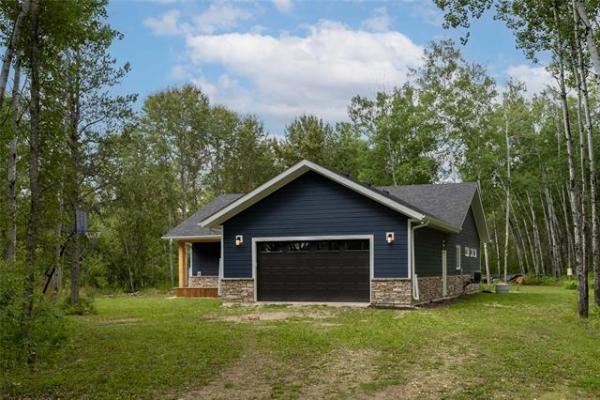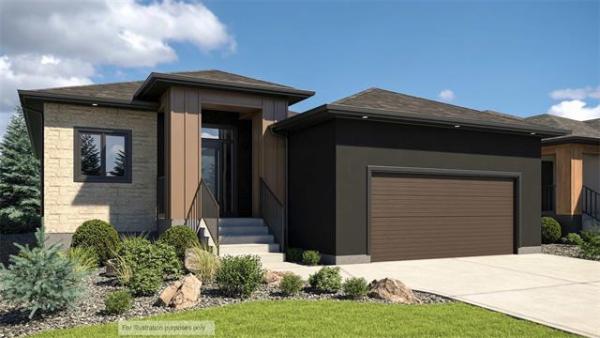QUESTION: I hope you can help shed some light on the required building code standards for stairs in private dwellings in Manitoba.
My son recently purchased a new house and moved in about two weeks ago. I went over, once they moved in, and noticed that the main staircase going from their main floor level to the upper level had very narrow stair treads.
I was a little surprised at this and thought I would measure my own home’s stairs. My house was built in 1986, and the main staircase has stair treads that measure 10½ inches deep. My son’s stairs measure 8 5/8 inches tread depth.
I searched the internet on building code standards and then phoned the Winnipeg permits office to get information on building code standards. The Winnipeg permits office sent me some information on the 2010 National Building Code (NBC) standards. These standards indicate that the minimum tread depth for stairs in a private dwelling have to be 235 mm or 9¼ inches.
According to the 2010 NBC, my son’s stairs do not meet the minimum tread depth. Do houses in Manitoba follow different building code standards for stairs than those set out in the 2010 NBC? If the stairs in my son’s house do not meet the building code standards, what options do home owners have to get these types of issues corrected? Thanks, — Gary White
Answer: Building code adherence and enforcement is the responsibility of the local municipality in which a home is built. Regardless, older homes do not have to conform to current building codes.
If the home is newly built, then there should be protection for your son through a new home warranty program or title insurance, but contacting the city for a record of permits and inspections should answer which way you go.
Despite several articles touching on the subject over the years, many readers do not understand the difference between a home inspector, like me, and a municipal building inspector. Registered home inspectors (RHI) are unlicensed private individuals, often business owner/operators, who primarily inspect houses for perspective buyers.
The majority of these homes are not new, but more and more clients are hiring us for inspections prior to possession of brand-new homes. No matter what age of home, adherence to building codes is beyond the scope of the inspection and the RHI is doing a performance-based assessment. That is not to say some concerns identified will be code issues, but these are normally items that are identified for safety concerns. Building officials are trained inspectors who are typically employed by a city or municipality and are tasked with ensuring new construction, or renovations on existing buildings, are meeting the applicable building codes at the time they are built.
So, the answer to your inquiry will solely depend on the age of the home your son has recently purchased. You state he has bought a "new house," but often people use this term when someone buys and moves into an older dwelling that is new for them. If I approach your question assuming it was built within the past couple of years, never occupied and sold as new by a builder, then I can state that your concerns are valid. If it is a resale home that is not covered under any sort of warranty, then my answer is simple. The older home does not have to comply with current codes or standards, unless the stairs have been recently replaced or a major renovation of the entire home has recently been undertaken.
In a newly built home, there is definitely some culpability for the improperly constructed stairway. Before a construction of a new house begins, permits must be obtained from the city or municipality in which it is built. A detailed plan must be submitted, and often a survey certificate or other document showing the location of the structure on the lot. Once submitted, an employee, or several individuals, will review the plan and application forms and either approve it or ask for revisions or additional information. Once approved, construction can begin at the desire of the builder or contractor.
This is where the grey area begins, as far as most people’s understanding goes. It is up to the builder or contractor to contact the municipality to perform phased inspections, as the construction progresses.
The number and point of completion of these inspections is at the discretion of the building official, but it is generally up to the builder to contact the inspector when the home is ready to have each phase checked out. If the builder does not arrange for an inspection at the appropriate times, or the inspection does not proceed for any of a number of reasons, then building code violations may occur. Sometimes, these are noticed after the fact, or upon final inspection of the property, but may also be missed if they are covered by further construction.
If the inspector is familiar with the various trades or contractors, and trusts their abilities and knowledge, they may choose to inspect only certain aspects of the construction.
If the home is newly built, it will likely have a new home warranty of some kind, which should cover defects in workmanship or code violations for the first year or longer after completion. Unless there has been a special exemption granted by the building official to allow the narrow treads on the stairway, which is possible, then the warranty provider should require the builder to correct the defective stairs. If there is no warranty, then it is more complicated to get this resolved. You may be successful in getting the city to force the contractor to comply after the fact if proper permits applications and inspections were never done. Otherwise, if you purchased title insurance when you bought the home, a claim with the insurance provider may get the stairs repaired.
Buying a previously occupied home will provide your son with little to no protection for items done wrong or in violation of current codes. If it is indeed a new home with this error, which was somehow overlooked, contacting the local municipality or city responsible for enforcement, or the title insurance provider, should yield a solution.
Ari Marantz is the owner of Trained Eye Home Inspection Ltd. and the past president of the Canadian Association of Home & Property Inspectors — Manitoba (cahpi.mb.ca). Questions can be emailed to trainedeye@iname.com. Ari can be reached at 204-291-5358 or check out his website at trainedeye.ca.



